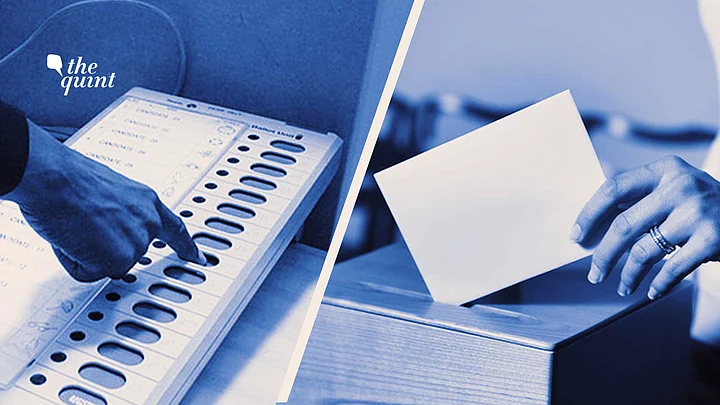A new reservation policy has been implemented just before the upcoming panchayat elections in Uttar Pradesh. In these elections, reservation will be implemented through rotation, along with many other conditions. In such a situation, major changes will take place in panchayat elections and caste equations will change for many seats.
According to the new policy:
- Districts, regions and gram panchayats with the most population of Scheduled Castes and backward classes will be reserved in rotation.
- Panchayats, which were reserved for the Scheduled Castes (SC) in 1995, 2000, 2005, 2010 and 2015, will not be allotted to the Scheduled Castes in this election. Those who have been reserved for backward classes will not be reserved for backward classes.
- The seats reserved for Scheduled Tribes, Scheduled Castes, Backward Classes and women in five elections from 1995 to 2015 will not be reserved for that category this time.
Who Has First Priority in the Rotation Policy?
According to Additional Chief Secretary Panchayati Raj Manoj Kumar, the most important principle of this rotation policy is that the villages, regions or district panchayats that have not been reserved for any category yet, will be first reserved for that category. Manoj Kumar has described the priority of reservation as follows:
First Scheduled Tribe Women, then Scheduled Tribes, then Scheduled Castes Women, Backward Class Women, Scheduled Castes Men, General Category Women and then the General Category.
Political Matters of Rotational Policy in Reservation
Senior journalist Anand Vardhan Singh stated that in case of the structure of panchayat elections in these elections, the political party does not use its mark. In such a situation, the importance of the person is more. The party removes the candidate but there is no election symbol.
The other special thing about these panchayat elections is that the scope of reservation has been increased a bit here. SC-ST gets 21.5 percent, 27 percent for OBC and 35 percent for women.
Counting both the drawbacks and benefits of this rotational policy, Singh says that the difference of this reservation policy will also be read on the functioning of the winning candidate.
“In most elections, the public sees that if the winning candidate did not work this time, he will see them next time. Report cards are decided in this way, based on good and bad work. Now, if it is known that the next time the seat will be changed in the rotation policy, then the winning candidate can also quit worrying about work.”Anand Wardha Singh, senior journalist
Explaining the other side of this reservation policy, it is said that if some seats are reserved, then the prospective candidates of other sections may give up hope. He felt that now there is no benefit of competition on such seats. This will change when the new reservation policy is implemented and then, such potential candidates will get a chance to try in the elections.
Senior journalist Vikrant Dubey, who covers Uttar Pradesh politics, describes the new reservation policy as a preparation for the 2022 Assembly elections and considers the BJP to be a big bet for women to promote and publicise reservation.
“The BJP is fully prepared to turn SP-BSP voters. By giving maximum opportunity to the backward caste in the district panchayat. The BJP is preparing the roadmap for the Assembly elections. Now see, there are 2 such district panchayats in the state which were never reserved for SC-OBC. Such panchayats will be given preference, and these things are also seen by the voters, the message will be given during the Assembly through the panchayats. Talking of women, there are seven district panchayats in the state, where there was never reservation for women. A direct message will be sent to women at these places.”Vikrant Dubey, senior journalist
“The second thing is that in the Assembly elections, it has been seen that in the BSP-SP alliance, the BSP's vote was not transferred to the SP, but the SP's vote was transferred. Now, in such a situation, the BJP is preparing to make the BSP a second option for voters,” added Dubey.
Complete Math of Seats
A total of 75 district panchayat presidents, 826 block chiefs, 3,051 district panchayat members, 75,855 area panchayat members, 58,194 gram panchayats, and 7,31,813 gram panchayat members are to be elected. These elections, which are going to be held before the 2022 Assembly elections, will clear the picture to some extent.
- District Panchayat
Total Posts - 75
Unreserved- 27
Female - 12
OBC - 27
SC-16
- Block Chief
Total Posts - 826
Unreserved- 314
Women - 113
OBC - 223
SC - 171
ST - 5
- Village Panchayat
Total Posts - 58194
Unreserved - 20,268
Female - 9739
OBC -15712
SC - 12045
ST - 330
Reservation in the List of District Panchayat Presidents
On Friday, 12 February, the complete reservation list was released for the election of the District Panchayat President. There is no reservation on the Gorakhpur district panchayat seat. In Lucknow, seats are reserved for SC women, whereas in Benares, OBC is reserved for women. Zilla Panchayat president will be elected on 25 of the 75 seats, including the parliamentary constituency of Lucknow.
The seats in 27 districts, including Gorakhpur, Ghaziabad, Gautam Budh Nagar, Agra, Mathura, Ayodhya, are unreserved.
Elections to be Held by 30 April
According to the order of the Allahabad High Court, elections to the panchayats are to be held by 30 April. The state government will complete the reservation process by 17 March. Six days will be given, from 2 March to 8 March, to file an objection.
(At The Quint, we question everything. Play an active role in shaping our journalism by becoming a member today.)
